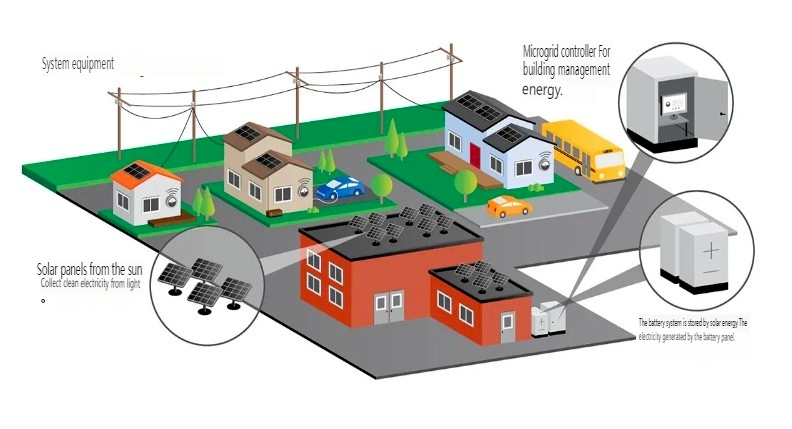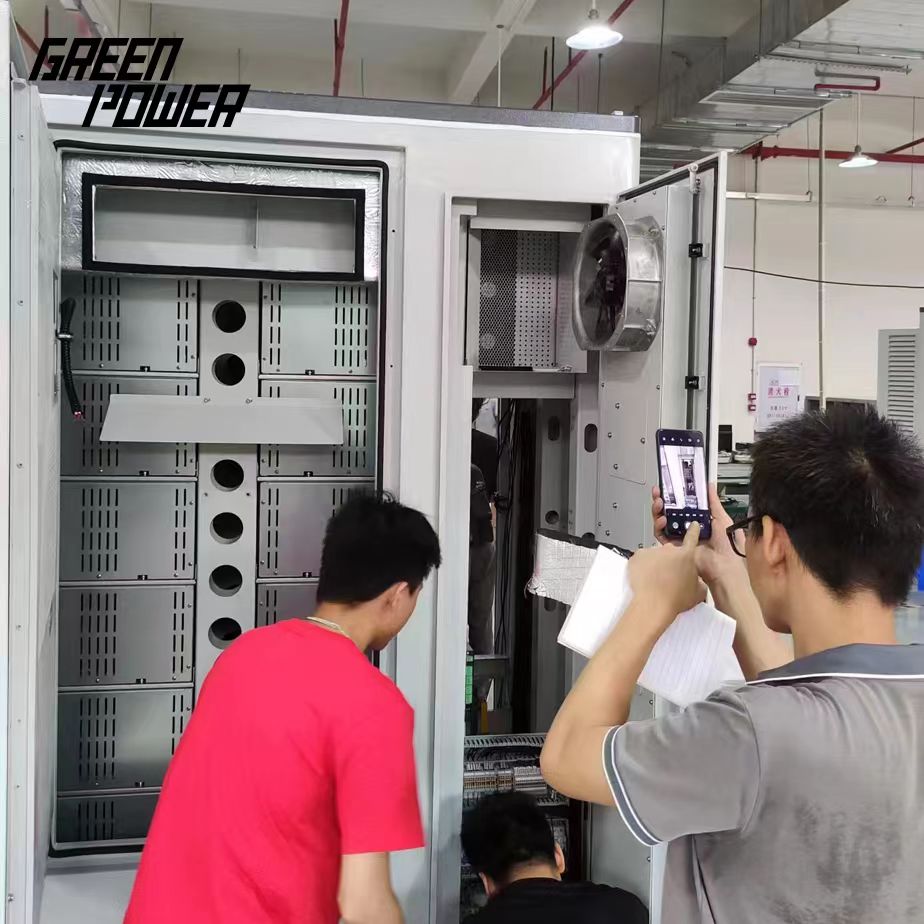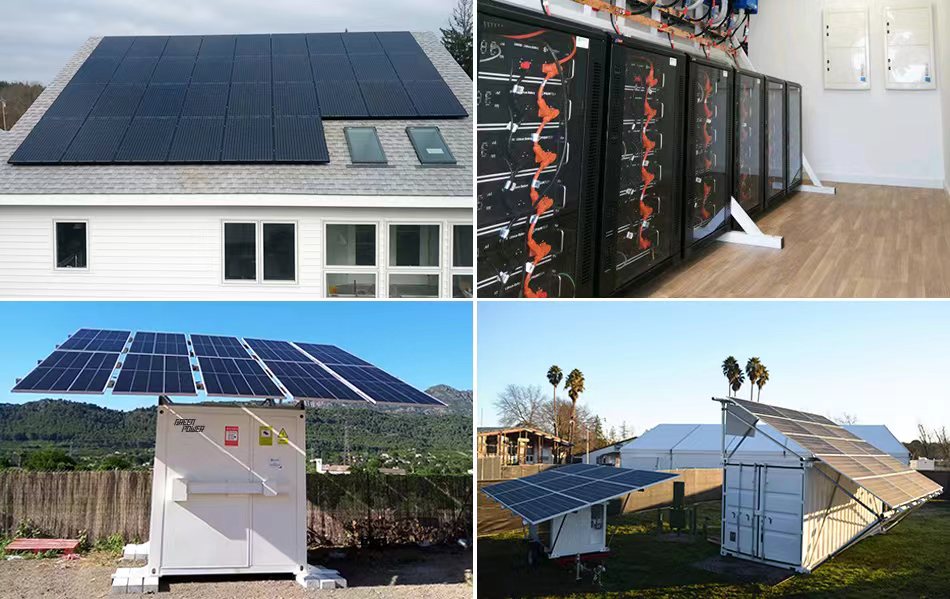Over the past decade, solar panels have become increasingly affordable for homes and small businesses. Whether for individual residences, communities, or commercial parks, the infrastructure providing power for local energy needs is known as a microgrid.
In this article, we will explore microgrids in detail, their operation, and applications. We will also delve into their benefits.
**What is a Microgrid?**
A microgrid is a small, localized power system that allows buildings or communities to maintain power during outages. These grids can also connect to the main grid and draw power when solar panels fall short or other issues arise. This means they can operate as part of a larger system while still providing energy independence and stability.
---
**How Do Microgrid Systems Work?**
Here's a detailed explanation of how microgrids operate:
1. **Energy Production:** Microgrids integrate various Distributed Energy Resources (DER) for power generation. These resources include solar panels, wind turbines, fuel cells, microturbines, diesel generators, and sometimes Combined Heat and Power (CHP) systems. These generators produce electricity to meet the connected load's demand.
2. **Energy Storage:** Many microgrids include Energy Storage Systems (ESS) such as batteries. These batteries store excess power generated during low demand or high renewable energy output periods. The stored energy can then be deployed during peak demand or when renewable energy is unavailable.
3. **Control and Management Systems:** Microgrids rely on advanced control and management systems to monitor and optimize the operation of various components within the system. These systems use real-time data on energy production, consumption, and storage to manage power flow efficiently, ensuring the stability and reliability of the microgrid.
4. **Grid Connection and Islanding:** Microgrids typically connect to the main utility grid, allowing for power input or output as needed. However, they can also operate independently (islanding) during emergencies or when economically advantageous. Islanding ensures continuous power supply to critical loads even during grid interruptions.
5. **Load Management:** Microgrids manage the power distribution to various loads connected to the system. Load management techniques such as demand response, load shedding, and load prioritization help optimize energy use and ensure critical loads receive power when needed.
6. **Communication and Control Infrastructure:** Microgrids rely on robust communication networks and control infrastructure to facilitate real-time monitoring and control of DERs, energy storage, and loads. This infrastructure allows operators to manage and optimize microgrid operations remotely.
7. **Renewable Energy Integration:** Microgrids often prioritize the integration of renewable energy sources such as solar and wind. Advanced forecasting techniques and predictive algorithms help operators anticipate renewable energy generation and optimize its integration with microgrid operations.
8. **Resilience and Reliability:** One of the primary advantages of microgrids is their ability to enhance resilience and reliability. By integrating diverse energy sources, energy storage, and smart control systems, microgrids can mitigate the impact of grid disruptions, reduce downtime, and provide uninterrupted power to critical facilities and communities.
**Types of Microgrid Systems**
Microgrid systems can be broadly categorized based on their configuration, ownership, and purpose.
**Grid-Tied Microgrids**
Grid-tied microgrids operate alongside the main grid. They can draw power from the grid, feed excess power back to the grid, or operate autonomously during grid outages.
These systems typically combine renewable energy (e.g., solar or wind) and energy storage solutions (e.g., batteries). The ability to sell excess energy back to the grid can provide economic benefits, making these systems common in urban settings, commercial buildings, and residential areas.
**Remote or Off-Grid Microgrids**
Off-grid microgrids are designed to operate independently of the main grid, ideal for remote areas where grid connectivity is unavailable or unreliable. These systems heavily rely on renewable energy, diesel generators, or a combination of both to ensure a stable power supply.
Common applications include remote villages, island communities, and military bases. The main challenge of off-grid microgrids is ensuring continuous energy supply despite the variability of renewable energy, often requiring robust energy storage solutions.
**Hybrid Microgrids**
Hybrid microgrids combine multiple energy and storage options to optimize efficiency, reliability, and cost. These systems can switch between different power sources based on availability and demand, seamlessly integrating renewable energy, fossil fuels, and batteries.
Hybrid microgrids are particularly useful in areas where renewable energy supply is inconsistent or where integrating multiple energy sources can enhance system resilience and stability. They are often used in industrial applications, large campuses, and areas with mixed energy needs.
**Community Microgrids**
Community microgrids are designed to serve specific communities, such as neighborhoods, towns, or campuses. These systems prioritize local energy production and consumption, often combining renewable energy and energy storage to enhance sustainability and resilience.
Community microgrids can operate independently or connect to the main grid, providing reliable power supply during outages and contributing to the overall energy security of the community. They help promote local energy independence and sustainability.
---**Why Do We Need Microgrids?**
These small, localized grids serve various purposes. Homes generating power with solar panels form part of a microgrid. Communities using renewable energy and batteries to connect to the grid for power are also part of microgrids. Businesses powering offices with solar panels and energy-efficient appliances are part of microgrids.
Larger-scale alternative energy sources like wind farms and industrial-scale solar plants also play a role. While they help protect the environment, the power transmission distances are often much longer than those of fossil fuel power plants, which can be built closer to demand. The U.S. energy infrastructure is vulnerable, and longer transmission distances can be challenging. Creating microgrids helps address the issue of local power generation.
During widespread power outages, microgrids become even more crucial. Homes, businesses, and even colleges equipped with solar panels and energy-efficient appliances can maintain basic services even when the main grid fails.
**Microgrid Setup Guide**
**Planning**
The primary goal of microgrid planning is to determine the requirements, configuration, and features of the microgrid system that best meet your energy needs while providing maximum economic and environmental benefits.
**Installing Equipment**
Installing microgrid energy systems can be a significant project, requiring expertise. When installing equipment, keep the following points in mind:
- Ensure you have all necessary permits and approvals before starting any work.
- Work with qualified electricians to install microgrid equipment.
- Follow all manufacturer instructions during equipment installation.
**Operation and Maintenance**
Like any other energy system, microgrids must be regularly operated and maintained to ensure optimal performance. This includes monitoring and controlling equipment and tracking the microgrid's output.
Microgrid operation can be manual or automated. While early microgrids were manually managed, automation is becoming increasingly common in residential settings. Automation can help optimize microgrid operations and reduce the need for human intervention.
Microgrids also require regular maintenance. This includes tasks like cleaning and repairing equipment and inspecting microgrid components to ensure smooth operation and provide early warnings of any issues. Modern software monitoring can also use predictive and prescriptive analytics to indicate early maintenance opportunities, saving money and preventing major problems.
If you're interested in learning more about our solar energy storage offerings, we encourage you to explore our product line. We offer a range of panels and battery that are designed for various applications and budgets, so you're sure to find the right solution for your needs.
Website:www.fgreenpv.com
Email:Info@fgreenpv.com
WhatsApp:+86 17311228539
Post time: Jul-20-2024














